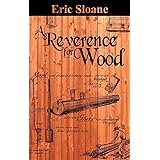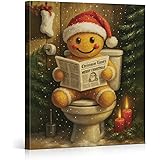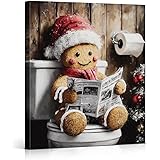As the calendar pages turn, many homeowners find themselves contemplating a refresh for their living spaces. The challenge often lies in discerning which interior design trends will genuinely elevate a home versus those that quickly fade. Fortunately, a clear vision for the upcoming year’s styles is emerging, offering actionable ways to update your aesthetic. The video above highlights some of the most compelling interior design trends for 2025, providing valuable insights into what is being seen across design publications and influencer circles. A closer look reveals how these adaptive trends can be woven into your home, ensuring your decor feels both current and timeless.
Embracing Western Influences in Interior Design
A notable shift in home aesthetics points towards a distinct embrace of Western influences. This particular style has been observed gaining significant traction in fashion, and its transition into interior design is now becoming evident. This trend offers a broad spectrum of integration, allowing for subtle nods or more overt declarations of the aesthetic.
Elements such as rustic woods and barn wood finishes are increasingly being sought after. These materials bring a sense of history and warmth, contributing to a country farm-style kitchen or a more Southern-inspired living area. American style furniture, characterized by its robust forms and enduring appeal, is also becoming prominent. Pieces with rich patina and inherent charm, alongside primitive style and folk art, are valued for their authentic Western flair.
Consideration can be given to decor items like Navajo-inspired patterns for pillows, trimmings, and accents. These details introduce a layer of cultural richness and distinctive artistry. Even seemingly disparate items, such as a French credenza in a Spanish-style home, can be perceived to lean into a Western vibe when surrounded by complementary elements. This trend invites a thoughtful curation of items that evoke a sense of heritage and rugged beauty, without necessarily demanding a complete overhaul of one’s existing decor.
The Refined Allure of Silver Tones
Moving away from the rustic, a more polished aesthetic is being observed with the resurgence of silver tones. This metallic hue is being incorporated across various facets of interior design, from hardware and accent tables to decorative pieces and lighting fixtures. A key distinction in this trend is a subtle shift from high-shine chrome towards more muted finishes.
Aluminum and pewter are gaining favor, offering a more natural and less overtly polished appearance. This matte silver finish is appreciated for its ability to reflect light beautifully, imparting a subtly futuristic feel. When paired with vintage or older elements, a beautiful juxtaposition is created, adding depth and tension to a design scheme. The inherent glamor associated with silver can be utilized to craft spaces that feel luxurious yet tasteful, avoiding an overly ostentatious display.
Integrating silver tones does not necessitate a departure from other metals; a balanced mix of brass, copper, and silver can yield a rich and layered look. The emphasis is on using silver in a way that contributes to a warm, high-glam atmosphere, reminiscent of the sophisticated elegance found in design from the 1970s. This approach ensures that the use of silver feels deliberate and contributes to an overall sense of refined luxury within the home.
The Ethereal Beauty of Glass Decor
The strategic use of glass is emerging as another significant trend, intrinsically linked to the desire for high glamor and the thoughtful manipulation of light within a space. Designers are increasingly exploring how glass can interact with light, creating dynamic visual effects and reflecting illumination in captivating ways. This material is seen as instrumental in crafting environments that feel romantic and glamorous.
An abundance of glass decor is being observed, including vases, sculptures, and even dinnerware, such as glass plates and crystal pieces. These items are chosen for their ability to refract and reflect light, adding an ethereal quality to interiors. Beyond clear glass, there is a growing appreciation for variations like smoked glass and amber glass. These tinted options introduce a warmer, more approachable sensibility, offering an alternative to the often stark appearance of transparent glass.
Fluted glass is also particularly prominent, offering textural interest and a subtle distortion of light that enhances its visual appeal. Moreover, the re-emergence of stained glass is being noted, although its incorporation can be more challenging due to the specialized nature and cost of contemporary craftsmanship. Nonetheless, its unique ability to transform light into vibrant patterns makes it a highly sought-after element for those seeking truly distinctive design statements. Thrifting and antique shopping are also excellent avenues for discovering unique glass pieces, with many older glassware collections now being re-evaluated for their aesthetic value.
The Appeal of Unique and Bespoke Lighting
In an era often dominated by mass-produced items, a strong inclination towards unique and bespoke lighting is being observed. This trend reflects a desire for individuality and a rejection of the ubiquity of certain widely available fixtures. Lighting is increasingly being considered as the “jewelry” of a home, with each piece, from a table lamp to a chandelier, playing a distinct and personal role in defining the space’s character.
Many homeowners are actively seeking out vintage or one-of-a-kind light fixtures that offer a sense of history and artisanal craftsmanship. This movement is a response to the oversaturation of common lighting styles, such as Sputnik-style mid-century lights, which have become prevalent due to widespread social media exposure and accessible online retail options. The appeal lies in acquiring pieces that possess a unique story and an aesthetic that cannot be easily replicated.
Exploring antique shops, flea markets, and specialized vintage dealers can uncover unexpected treasures, often at prices comparable to or even less than new, mass-produced alternatives. Even major manufacturers are anticipated to introduce more distinctive designs, catering to this renewed demand for originality. The focus is on selecting lighting that feels special and curated, ensuring that a home’s illumination not only serves a functional purpose but also acts as a significant decorative statement, setting the space apart from others.
The Enduring Charm of Antiques and Vintage Decor
The integration of antiques and vintage decor is poised to be a dominant force in interior design for 2025. This trend, recognized by prominent publications like Architectural Digest and House Beautiful, signifies a growing appreciation for items that carry a history and a handmade quality. It reflects a broader movement towards sustainability and a desire for interiors that feel rich, layered, and deeply personal.
People are increasingly drawn to pieces that possess inherent character, perhaps bearing the marks of time or the signature of a past artisan. These older items stand in contrast to the often sterile perfection of newly manufactured goods, offering a warmth and depth that is difficult to replicate. The charm of a patinad finish, a rustic texture, or an imperfect detail is highly valued, adding a unique narrative to any space.
The accessibility of vintage and antique shopping has also contributed to this trend. While curated online platforms might present higher price points, exploring flea markets, thrift stores, and antique malls can yield incredible finds at various budgets. It is often possible to discover unique furniture, lighting, and decorative objects that combine pieces from different eras. This approach not only promotes sustainable consumption by reusing existing resources but also allows for the creation of interiors that are visually rich, deeply individual, and imbued with a sense of timeless elegance.
The Immersive Effect of Color Drenching
Color drenching, a technique that gained momentum in previous years, is now solidifying its status as a staple in interior design. This method involves painting walls, baseboards, trim, doors, and even ceilings in a single, cohesive color. The impact of this approach is immediate and striking, lending an elevated and streamlined appearance to any room.
When executed skillfully, color drenching can make a space feel significantly more expensive and impactful. It minimizes visual interruptions and creates a cocoon-like, enveloping atmosphere that feels incredibly cozy and cohesive. The technique is particularly effective with darker or moodier hues, where the intensity of the color is amplified, transforming a room into a dramatic and sophisticated retreat. For example, painting a movie room in a deep maroon-brown, including the ceiling, creates an immersive experience that a white ceiling would interrupt.
This design choice eliminates stark contrasts between different architectural elements, binding the entire space together. It simplifies the color scheme, making it an excellent option for those who may feel less confident in selecting multiple complementary paint colors for different surfaces. By unifying the room in a single shade, a sense of quiet sophistication and artistic intention is effortlessly achieved, making color drenching a powerful tool for creating impactful and harmonious interiors in 2025.
The Warmth of Neutralized Oak Wood Tones
A specific preference for wood tones is being observed, with a clear emphasis on neutralized oak. This particular wood color is anticipated to be extremely popular, characterized by its medium tone—neither excessively dark nor overly light. It represents a subtle shift away from very pale woods, moving towards a richer, more grounded aesthetic.
A key aspect of this trend is the prominence of wood grain, with grainy oak being highly sought after. This material is valued for its inherent texture and natural beauty, which can be seen in many vintage pieces, such as credenzas, further highlighting its timeless appeal. The desired oak tone is distinctly warm but avoids the yellowy undertones of honey oak, leaning instead towards an ashy-warm quality. This balanced warmth ensures the wood feels inviting and contemporary without being overtly rustic.
Designers are incorporating this medium-tone oak into various applications, from hardwood flooring to ceiling beams. Its versatility allows it to blend seamlessly into diverse interior styles, providing a consistent foundation for other design elements. When selecting this wood tone, consideration for a room’s natural lighting is paramount, as this can significantly influence how the color is perceived. Sampling the wood in the intended space is therefore recommended to ensure the perfect match, contributing to a harmonious and sophisticated interior.
The Art of Pattern Play
The playful and sophisticated integration of patterns is an interior design trend that continues to evolve, gaining even more traction in 2025. What began as a cautious exploration is now blossoming into a bolder approach, with designers and homeowners alike embracing complex pattern mixing to create truly unique spaces. Influential figures such as Heidi Caillier, known for her masterful combination of patterns and colors, have inspired many to experiment more freely with textiles and wallpapers.
For those new to pattern mixing, block prints offer an accessible starting point. These repetitive patterns are often found in more neutralized color palettes, making them easier to integrate without overwhelming a space. They provide a gentle introduction to pattern, allowing for subtle visual interest before venturing into more intricate combinations. Brands like Studio McGee and Amber Interiors frequently showcase beautiful block-printed textiles, demonstrating their versatility and charm.
Achieving a harmonious blend of patterns often involves considering scale: mixing small-scale prints with large-scale motifs, incorporating abstract designs, and almost always including a stripe. Stripes are considered essential as they provide a visual anchor, settling down the complexity of other patterns and contributing to a sense of balance. This trend encourages a creative and experimental approach, recognizing that trial and error can lead to some of the most captivating and personalized interiors. The result is a space that is vibrant, full of personality, and visually rich, reflecting a thoughtful curation of textures and designs.
The Charming Revival of Skirted Furniture and Accents
A delightful and easily incorporated trend for 2025 involves the re-emergence of skirted furniture and accents. This charming detail, often seen on the bottom of sofas, slipper chairs, or benches, introduces a layer of softness and a touch of traditional elegance into modern interiors. Beyond furniture, skirts are being cleverly utilized in various parts of the home, offering both aesthetic appeal and practical solutions.
Designers are incorporating skirts over cabinets, underneath bathroom sinks, or within butler’s pantries to conceal utilitarian areas while adding a decorative element. This approach provides an opportunity to introduce patterns and fabric textures into spaces where traditional cabinet doors might otherwise be expected. For instance, creating a simple fabric skirt to cover the underside of a sink or the bottom of a bookcase instantly adds charm and a bespoke feel, often achievable through DIY efforts.
The influence of British classic styles, popularized by designers like DeVol kitchens, is evident in this trend, with many drawing inspiration from their sophisticated use of skirted elements. This detail offers a unique way to soften hard lines, add a touch of romance, and infuse a space with character. It represents a shift towards finding creative and often more affordable alternatives to conventional fixtures, allowing for a personalized and inviting atmosphere.











